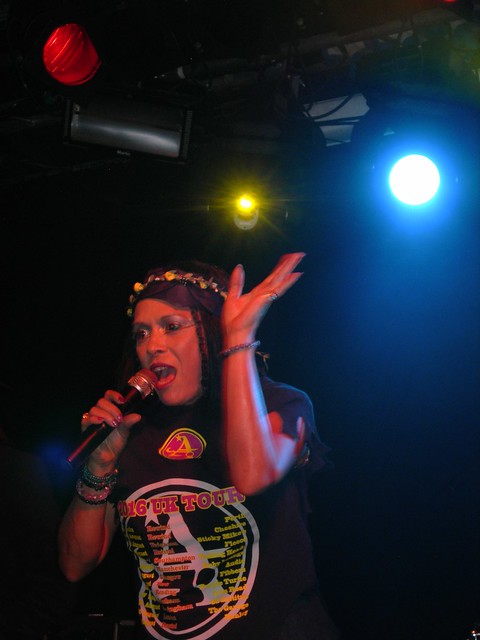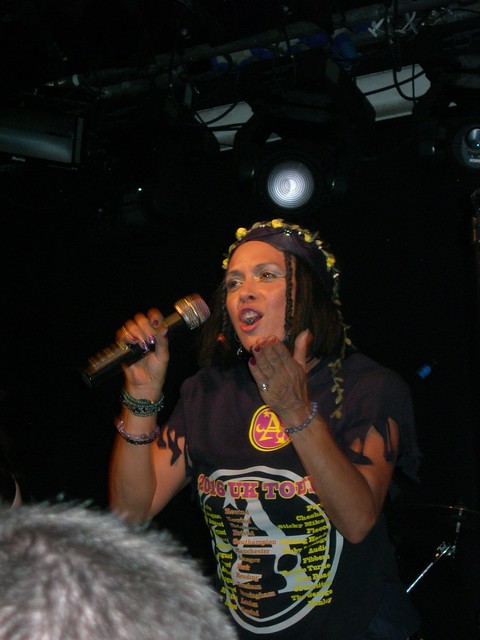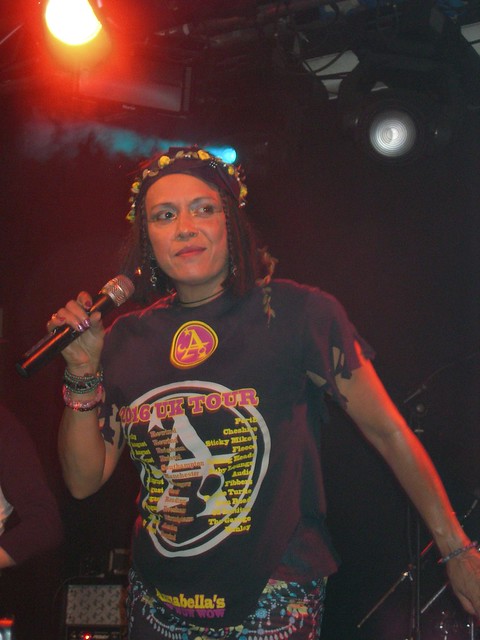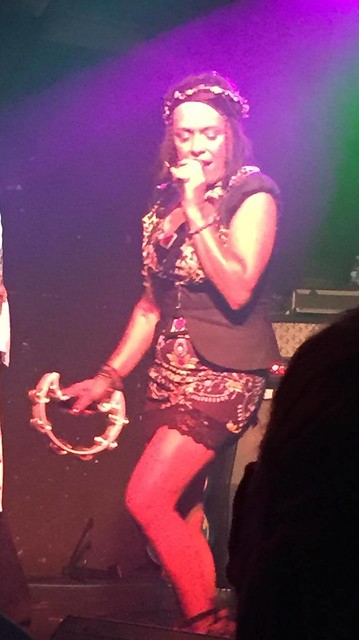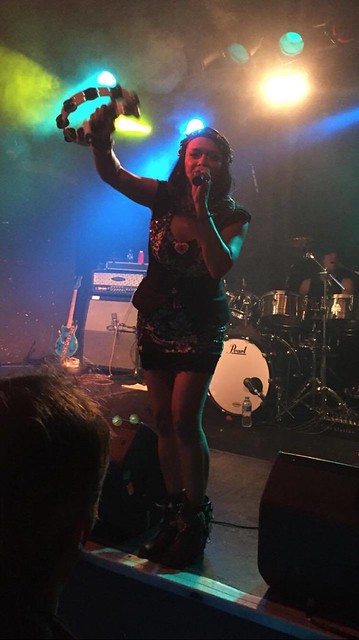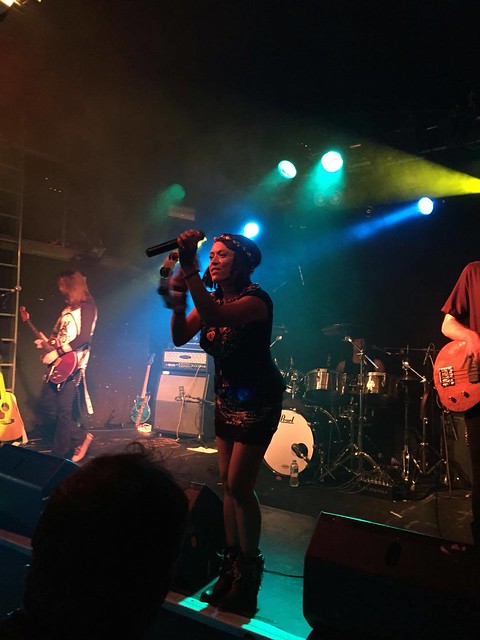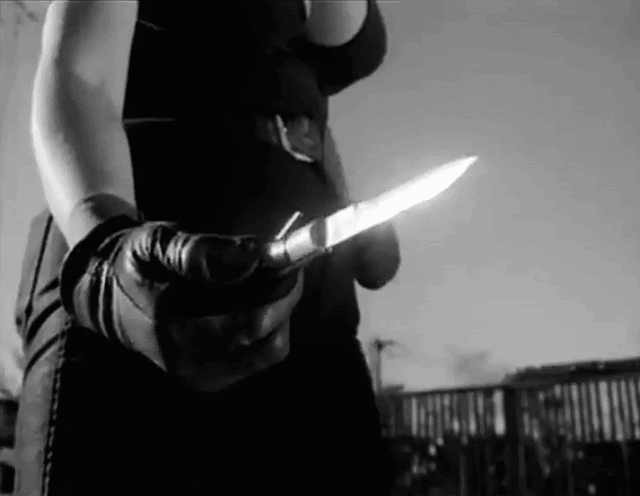/ The leading ladies of Russ Meyer's
Faster, Pussycat! Kill! Kill! (1965): Haji (as Rosie, seated atop Porsche), Lori Williams (as Billie, in white hotpants) and the mighty Tura Satana (as Varla) /
From the
27 July 2016 Facebook events page:
“Ladies and
gentlemen, welcome to violence, the word and the act. While violence cloaks
itself in a plethora of disguises, its favourite mantle still remains: sex.
Violence devours all it touches, its voracious appetite rarely fulfilled. Yet
violence doesn’t only destroy – it creates and moulds as well! Let’s examine
closely, then, this dangerously evil creation, this new breed, encased and
contained within the supple skin of woman… the softness is there, the
unmistakable smell of female. The
surface shiny and silken. The body
yielding yet wanton. But a word of caution – handles with care and don’t drop
your guard! This rapacious new breed prowls both alone and in packs, operating
at any level! Any time! Anywhere! And with anybody! Who are they? One might be
your secretary! Your doctor’s receptionist! Or a dancer in a go-go club!”
Yes! The Lobotomy Room Goes to the Movies film selection
this month is ultimate sexploitation B-movie Faster, Pussycat! Kill! Kill!
(1966). Perhaps cleavage-fixated director Russ Meyer’s defining masterpiece, it
follows a trio of vicious thrill-hungry go-go dancers going on a homicidal rampage
in the desert. As cinema’s sleaze
maestro John Waters argues, “Faster Pussycat! Kill! Kill! is beyond a doubt the
best movie ever made. It is possibly better than any film that will be made in
the future!”
Waters also describes butch, black-clad gang leader Varla “one
of the best villains in screen history.” Varla was, of course, portrayed by the
late, great tassel-twirling burlesque queen turned snarling Russ Meyer leading
lady Tura Satana (1938-2011). The truly Amazonian Satana’s fierce, exotic
beauty and powerful screen presence in Faster ensured her perennial cult
status. Satana’s birthday would have been this month (10 July). So let’s
celebrate all things Tura in an evening of dames, booze, chains and boots! It
will leave a taste of evil in your mouth!
As usual: arrive circa 8 pm to order your drinks and grab
the best seats. The film starts at 8:30 pm prompt. The film is FREE and seating
is limited. If you’re feeling proactive, contact Fontaine’s to reserve a seat
in advance: email ruby@fontaines.bar or call 07718 000546.
"If you want wild living FAST! And if you want to end
up giving your all / That’s because pussycat is living reckless / pussycat is
riding high / If you think that you can tame her / Well just you try!”
Spontaneous outbreaks of frantic go-go dancing are
encouraged at the FREE 27 July 2016 Lobotomy Room presentation of Russ Meyer’s
vicious 1965 sexploitation cult classick Faster, Pussycat! Kill! Kill!
downstairs in The Bamboo Lounge of Fontaine’s!
This was the most successful and rammed Lobotomy Room Goes
to the Movies club yet. About 31 attendees were crammed into the Fontaine’s basement
Bamboo Lounge – our biggest crowd to date. That may not sound like much, but as
far as I knew the place only seated twenty-odd people! I actually had to post
an update on Facebook the night before announcing if you hadn’t reserved a seat
in advance, not to come to avoid disappointment as we’d reached maximum
capacity. Pal and I had to watch the film standing in the DJ booth because
there was no seating left! It’s a real
testament to how beloved Faster, Pussycat! Kill! Kill! remains well into the twenty-first century.
Russ Meyer’s fifty-one year old twisted vision about homicidal go-go dancers
running amok in the desert is still enflaming (warping? Corrupting?) peoples’ imaginations.
As usual, I stood up to give a garbled, blurted introduction
to the film, incorporating the following fun facts:
The film premiered in Los Angeles on 6 August 1965. Early
working titles included The Leather Girls and The Mankillers. This was veteran sexploitation maestro Russ
Meyer’s fourteenth film. At the time Pussycat came and went without making much
of an impression: just another trashy
low-budget B-movie for the drive-in and fleapit grindhouse circuit. (Pussycat
was one of the rare Meyer films to lose money at the box office). Seen today,
Tura Satana’s ferocious performance as Varla is so sensational and screen-scalding
it should have heralded film stardom (even if restricted to the realm of B-movies). Instead, she simply resumed her burlesque career and only made a few
more scattered minor film appearances. Lori Williams (who plays blonde sex
kitten Billie) admitted that when she was getting lots of TV work in the
seventies she deleted Pussycat from her résumé because it was embarrassing to
be associated with it.
Pussycat wasn’t properly re-discovered and reappraised until
circa the late seventies and early eighties as scabrous young punk Baltimore filmmaker
John Waters rose to prominence and began championing it in his interviews. (Waters
first saw
Pussycat as a teenager at a Baltimore drive-in. Intoxicated, he then
dragged Divine with him to see
Pussycat again). In
Big Bosoms and Square Jaws
(Jimmy McDonough’s essential 2005 biography of Russ Meyer), Waters would
succinctly nail
Pussycat’s weird allure as “a redneck lesbian killer drama, and
because it was black-and -white, somehow arty”. In particular, Waters devoted a
whole chapter to his to Meyer (and another of his key influences, Herschell
Gordon Lewis) in his 1981 book
Shock Value: A Tasteful Book about Bad
Taste. Waters’ acclaim – plus
The Cramps covering The Bostweeds’ theme tune and
the advent of home video in the eighties – is when
Pussycat’s status as a
much-loved cult film revered by punks, gays, trash-hounds and feminists alike truly
began.
Satana and Haji were already friends in real life before
Pussycat, having worked together as exotic dancers since the early sixties. The
explosive opening scene of the three women frantically go-go dancing was filmed
at an actual Los Angeles burlesque club called The Pink Pussycat where Haji and
Tura worked (the leering, sweaty-faced men shouting, “Go, baby! Go!” were members
of the crew).

Satana was a burlesque dancer for about 18 years, beginning
when she was just 15. By all accounts Satana (real name: Suvaki Yamaguchi) endured
a tough childhood and spent time in a reform school. Her ancestry was a spicy
mixture of Japanese, Filipino and Cheyenne (American Indian) hence her exotic jasmine-scented
looks and why she routinely billed herself as “Miss Japan Beautiful” when she
was headlining strip clubs. (Tassel-twirling was her speciality). Reading some of Satana’s more outrageous interviews,
you get the impression she never let the truth get in the way of a good story.
For example she claimed to have had a lengthy romance with Elvis Presley and
that he proposed marriage. Who would know? Is this romance documented in any of
the many Presley biographies? (Not that I begrudge her: great stars like Satana
are allowed to embellish and self-mythologize as much as they like).
/ Above: "Miss Japan Beautiful": Young Tura Satana in her striptease days /
Of the triumvirate, only Lori Williams is still alive:
Satana died in 2011 aged 72. Haji died in 2013 aged 67. Williams is now 70.
/ “Billie (Lori Williams) is the femme of the group, the main things on her mind being sex and alcohol. In her white short-shorts, halter top and knee-high patent leather go-go boots, Billie is forever breaking into torrid go-go steps whenever trouble arises.” From John Waters’ 1981 book Shock Value: A Tasteful Book about Bad Taste /
For anyone interested: Satana’s bra size at the time of
Pussycat was 38DD. Later in life she was 38FF. Unsurprisingly, the bra Satana
wears in Pussycat is from Frederick’s of Hollywood – purveyors of glamour wear
for the discerning starlet.
Satana made no secret of genuinely loathing Susan Bernard, the
16-year old actress who played perky cry-baby kidnap victim Linda. For her part, Bernhard admitted she was actively
terrified of the imposing Satana. Bernhard’s panic-stricken, tearful reactions
are not acting!
It’s unfair that Satana’s performance sometimes overshadows
those of Lori Williams and Haji, who are both excellent. In particular I love
Haji’s depiction of tempestuous Rosie and her thick Mexican “Spanglish” comedy
accent. (In real life Haji was French-Canadian and hailed from Quebec – the
same part of the world as me). This is
also Haji’s original nose in Pussycat and she was never more beautiful. In
subsequent films it was dramatically whittled-down to the standard issue
“electric plug socket” starlet nose job ubiquitous in the sixties.
/ “(Varla’s) girlfriend Rosie (Haji) is a mean Mexican with a weakness for switchblades who emphasises her many moments of disgust by spitting or picking her teeth with whatever is handy.” From John Waters’ 1981 book Shock Value: A Tasteful Book about Bad Taste /
One thing I intended to mention in my introduction but
completely forgot: the implied lesbian relationship between Varla and Rosie,
which definitely contributes to Pussycat’s reputation as a LGBT favourite. (Meyer himself would later – accurately - exclaim
about Pussycat’s cult followers: “Lesbians and fags are crazy about it.”). Haji
would later relate being surprised when Meyer instructed her to look stricken
with jealousy and start to cry when she catches Varla making out on in the hay
with a man (Paul Trinka as Kirk). Why? Meyer had never once explained to either
actress they were meant to be portraying lovers. And that was mid-way through
filming! Haji had no objections to playing a lesbian character, she explained -
she just would have approached certain scenes differently had she known. In
fact maybe Meyer not telling them was a stroke of genius. As a result, the way Varla
and Rosie’s relationship is hinted-at as no big deal rather than spelled-out
seems coolly nonchalant and modern. I particularly love it when Rosie snaps to
attention and lights Varla’s cigarillo for her like a good submissive. No doubt
who is the “top” in that couple.
Also intriguingly queer is Meyer’s appreciative filming of
muscle-bound Dennis Busch as the simple-minded, childlike brain-damaged brother
known as The Vegetable. Seemingly an
equal opportunity perv, Meyer’s camera lingers over Busch’s sculpted beefcake brawn
almost as lovingly (lecherously?) as it does over the women’s décolletage in a
surprisingly homoerotic manner. (The scene of The Vegetable pumping weights shirtless
wouldn’t look out of place in an Athletic Model Guild film. I was curious if
the actor Busch had done any homoerotic physique modelling in the fifties or
sixties. Surely Bob Mizer would have swooped on him? A Google search didn’t
reveal anything (he may have used a different nom de porn for beefcake
modelling). In fact, Google revealed virtually nothing about Busch at all. His
IMDb bio, for example, consists of precisely one sentence: “Dennis Busch is an
actor, known for Faster, Pussycat! Kill! Kill! (1965)”. Who was he?). This
is interesting because the ultra-conservative Meyer’s treatment of gay,
bisexual and transsexual characters is frequently problematic (they usually end
up luridly and brutally killed at the end!). But to be fair, he was pioneering
for routinely including such characters in the sixties at all when it was far
from the norm. And it’s also nice how Meyer allows Billie in that sequence to
frankly and unapologetically ogle The Vegetable’s physique and take the lead
initiating sex. Take that, “male gaze” theorists!
I hadn’t actually watched my
Pussycat DVD in many few years
so it was a great opportunity to re-visit it. This is surely Meyer’s magnum
opus. It holds up beautifully: like John Waters has argued,
Pussycat “ages like
fine wine.” This is exciting virtuoso filmmaking by any standards. Not a single
wasted shot, everything stark, primal and minimal. It’s still as intense, perverse,
gritty and kinky as the first time I saw it, probably at London’s Scala cinema
in the early nineties. (The Scala regularly held Russ Meyer double bills –
bliss!). The terse, hardboiled but campy
dialogue is endlessly quotable. I love the opening strip club sequence of the scantily-clad
trio frantically doing the Watusi and later how Meyer films them from looming low
angles so that they look truly towering, Amazonian and menacing in the stark
desert setting.
Pussycat’s influence on
Waters’ sensibility is obvious, especially the perfectly-judged broad acting
and the way everyone shouts / snarl their lines. (Satana’s sneering, abrasive delivery
definitely anticipates Divine as bad girl dawn Davenport in
Female Trouble (1974). Not
to mention the black liquid eyeliner).
/ “She's a cold one, alright… more stallion than mare. Too much for one man to handle.” /
Varla would be Tura Satana’s only major film role. What a powerful
presence! And what a performance: Satana goes from initially sexy to monstrous by
the conclusion when she’s become an utterly implacable killing machine. Meyer
would later admit that he regretted not engaging Satana for more film roles. Maybe
other parts would have been anti-climactic anyway? (I have to admit I’ve never
seen Satana’s subsequent films
The Asto-Zombies (1968) or
The Doll Squad
(1973)). Ultimately it probably doesn’t really matter: Satana’s one starring
role in
Faster, Pussycat! Kill! Kill! ensured her immortality as cinema’s
greatest bad girl.
Further reading:
I highly recommend you track down
Big Bosoms and Square Jaws: The Biography of Russ Meyer by Jimmy McDonough on Amazon.
The
Miss Meyer blog is devoted to Russ Meyer, sexploitation, horror, cakes, wrestling and other musings. Check it out
here.
On a related note, read my interviews with
John Waters and
Poison Ivy of The Cramps
My next Lobotomy Room Goes to the Movies film club in the basement Bamboo Lounge of Fontaine's in Dalston is Federico Fellini's swirling decadent masterpiece
La Dolce Vita (1960)! Bank Holiday Sunday (28 August). Full details
here.
